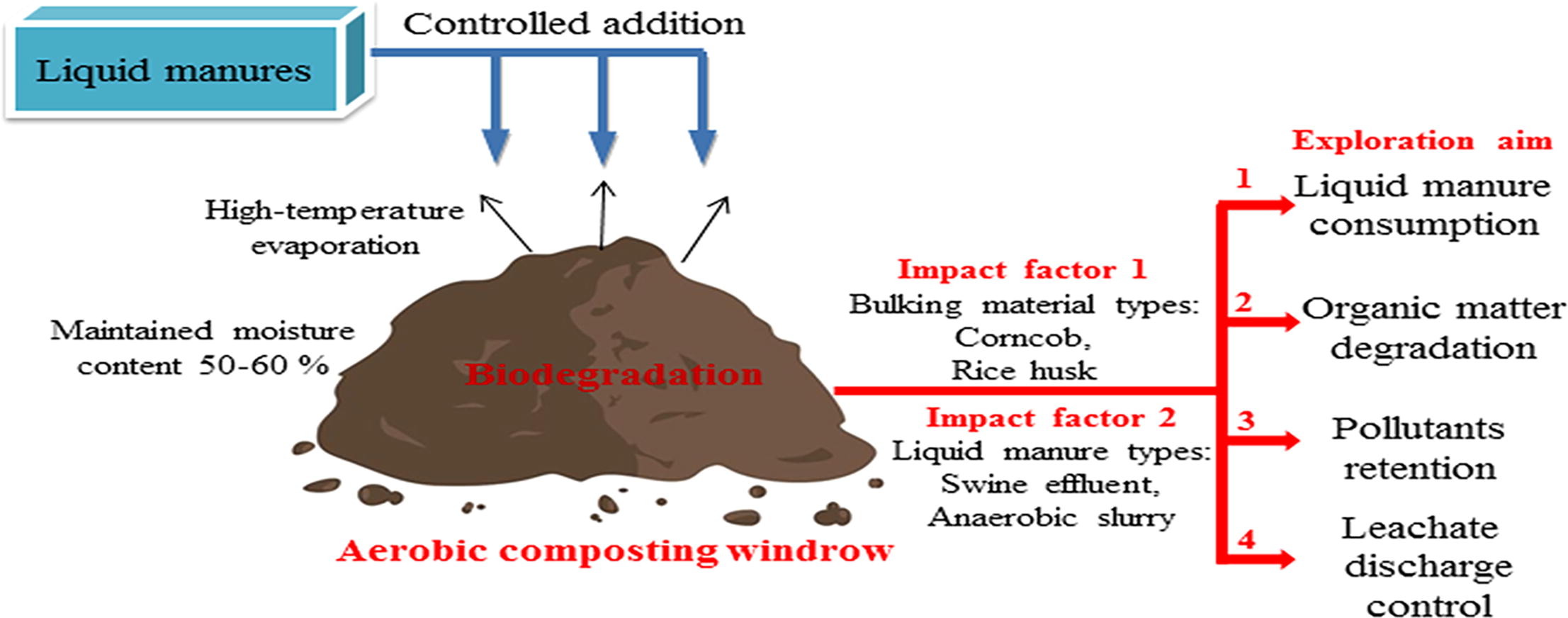Aerobic compost has been one of the major technologies during the past few decades. It is used in converting livestock manure and slurry waste into nutrient-rich fertilizers, thus making the waste bioavailable to plants. Essentially, aerobic compost is a process of organic pollutants degradation by microorganisms. During composting process, energy is generated due to the organic pollutants biodegradation, which facilitate the composting temperature improvement. At higher temperatures ( >50°C), microbial fermentation is accelerated and weed seeds present are easily disintegrated along with pathogenic microorganisms, resulting in water loss through evaporation. Moisture evaporation is a vital phase during composting because it can remove excess heat and moderate the temperature, both of which are necessary for successful composting. Uncontrolled or excess moisture evaporation in windrows (exceeding the optimum range of 50–60% of moisture content) can not only disrupt the moisture environment for microbial fermentation, subsequently inhibit microbial activity, and reduce the decomposition rate of organic pollutants, but also produce more leachate, inducing the secondary pollution. Meantime, the water adsorption quality and high porosity of bulking agents may accelerate the water consumption rate. Therefore, moisture compensation and control in windrows are required to maintain an optimum moisture content for microbial activity during the composting process. However, it is a feasible way for solid manure composting windrows to compensate the moisture content using the livestock wastewater as supplementary water, which might be also an efficient way for the co-composting of solid manure and liquid manure(livestock wastewater).Until now, most previous studies on the addition of liquid manure to solid manure composting were incidental and non-systematic, which could not fully reveal the characteristics of co-composting of solid manure with liquid manure. Therefore, exploring a systematic addition of liquid manure to solid manure composting is urgently required to accelerate and maintain composting temperatures for efficient aerobic composting processes and reduce leachate production during composting process.
Recently, this study published in Bioresource Technology by PhD student Fan Hongyong from Prof.Liu Chaoxiang’s group in the Institute of Urban Environment of the Chinese Academy of Sciences revealed a systematic volume model developed for controlling addition of liquid manure on composting windrows and explored the effects of the controlled addition method on composting process, organic pollutants degradation, final compost quality, leachate generation and livestock wastewater consumption.
The researchers developed a systematic volume model for liquid manure addition according to the actual windrows weight, the actual windrows moisture content and the benchmark content 65% during composting process. The effects of the controlled addition method on composting process, organic pollutants degradation, final composts qualities and leachate generation were explored comparably in aerobic windrows using different bulking materials (corncob and rice husk) and different supplementary livestock waste water (swine effluent and biogas slurry).
The data in this study indicated that this volume model technique played a critical role in reducing leachate generation, enhancing the evaporation rates and improving the overall efficiency of the co-composting process. With the controlled addition of liquid manure, bulking materials with higher content of biodegradable carbon (corncob) and liquid manure with a higher concentration of organic pollutants (swine effluent) were more beneficial for organic matter degradation, liquid manure consumption and pollutants retention during the co-composting process. Consequently, the optimization of these major influencing factors could compensate for efforts geared towards better utilization of the co-composting process.
The study presents a novel and potential way for livestock wastes treatment and is worthy to be a theoretical guidance for future research and engineering application exploration of the co-composting with solid manure and liquid manure.
This work is financially supported by the Nature Science Foundation of China, Key Research and Development Program Social Development Project in Zhejiang and the STS project of Science and Technology Department in Fujian.
